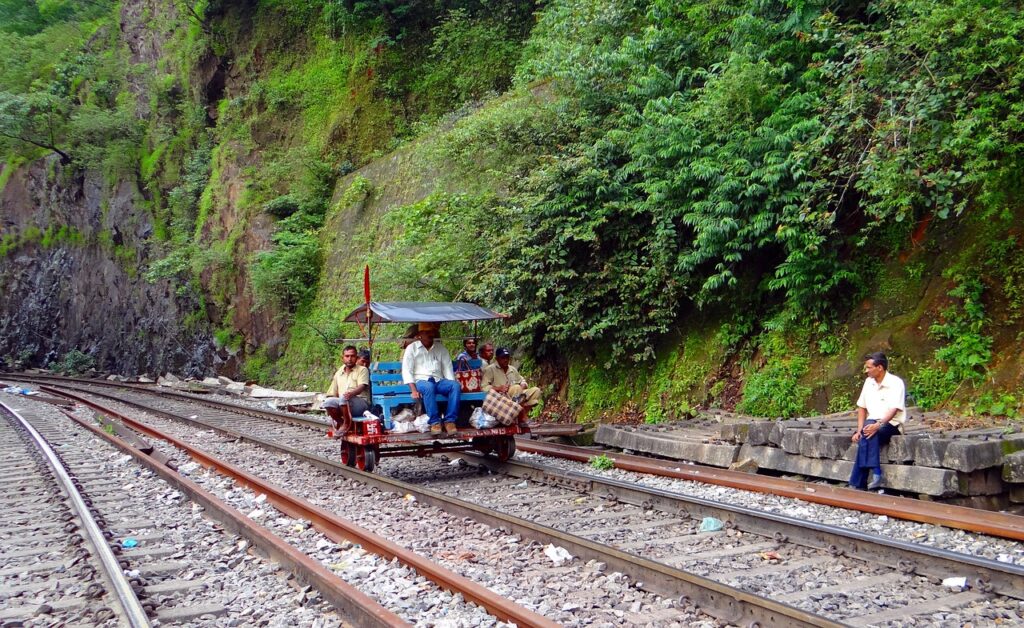
New Delhi: Indian Railways has reported a profit of ₹3,260 crore in the 2023-24 fiscal year, marking a notable shift from its long history of financial losses. With cash flowing from freight, passengers, and a cautious dip into privatization, it’s in the black, the Union Minister of Railways, Ashwini Vaishnaw, informed the Lok Sabha today.
Freight, the unsung hero, has cashed in on India’s economic surge, hauling coal, steel, and goods to drive the bulk of that ₹2.56 lakh crore. Due to the implementation of several freight revenue initiatives, the freight carried by IR during 2020-21 was 1,233 million tonnes, which increased to 1,591 million tonnes during 2023-24, marking a growth of 29%. The Minister projected 1.6 billion tonnes of freight loading in the FY 2024-25, making it the third largest freight handling railway system in the world. He illustrated some of the “important measures” to improve the freight that included-
- Encouraging the private sector to develop the modern rail freight terminals under the ‘Gati Shakti Multi- Modal Cargo Terminal (GCT)’ policy and augmenting/ upgrading the infrastructure at railway-owned goods sheds.
- Implementing various schemes for the private sector to invest in wagons, including the commodity-focused specialized wagons such as wagons for cement, oil, steel, fly-ash, automobiles etc.
- Facilitating cargo aggregation and thereby expanding the commodity basket by the schemes, including the policy of “Cargo Aggregator Transportation Product” and “Joint Parcel Product-Rapid Cargo Services”.
Historically, the railways were a financial sinkhole—operating ratios often topped 100% pre-2016, per CAG audits, meaning expenses outstripped revenue. Losses hit tens of thousands of crores in some years, masked by taxpayer cash. Why? Low fares for the masses, unprofitable lines to remote areas, and a workforce of over 1.2 million with hefty pensions.
The 2023-24 fiscal year breaks this trend, propelled by freight revenue reaching ₹1.4 lakh crore, indicating that expenses outstripped revenue.
Still, in 2023-24, staff and retiree costs—around 50-60% of revenue, or ₹1.3 lakh crore by recent budgets—gobble up most earnings. Energy upgrades, while smart (think long-term savings), demand big upfront spending too.
How much do private trains fuel the Railway’s profit?
Passenger revenue contributed ₹70,000 crore, lifted by a post-pandemic surge in travel demand and modest fare hikes. Electrification of over 90% of the rail network further reduced fuel costs by hundreds of crores annually, supporting this financial upturn. This, alongside the introduction of private trains, bolstered earnings, but these private trains do not serve as the main catalyst for the surplus. Significant costs tied to private trains temper their impact, and sustaining profitability in the future hinges on overcoming substantial challenges and implementing broader systemic changes beyond privatization.
Since 2020, the government has pursued privatisation by permitting private trains on certain routes to enhance efficiency and service quality. Back then, the government pitched running 151 trains on 109 routes with private players, aiming to inject capital and sharpen service. By 2023-24, it’s not a full handover—Indian Railways is still public—but early steps have paid off. These trains, exemplified by the Tejas Express operated by the semi-private Indian Railway Catering and Tourism Corporation (IRCTC), accounted for roughly 5% of total operations.
Charging fares ₹200-300 higher per ticket than standard services, private trains are estimated to have contributed ₹300-500 crore to the ₹3,260 crore profit, representing 10-15% of the total. Exact figures remain elusive, as official reports do not fully isolate private train earnings, but this estimate aligns with IRCTC’s reported ₹1,000 crore profit in 2022-23 and the limited scope of private operations. Freight revenue, at ₹1.4 lakh crore, continues to dominate the financial picture. Without this, losses from rural routes might’ve erased the surplus.
The financial benefits of private trains come with considerable costs. Infrastructure upgrades, such as high-speed tracks and modernized stations, demand ₹1,000-2,000 crore per route. With plans for 109 routes—though only a handful are currently operational—the total investment could climb into the tens of thousands of crores. Operational expenses, including maintenance and staffing, consume approximately 30% of private train revenue. For instance, a train earning ₹100 crore annually might lose ₹30 crore to these costs, leaving ₹70 crore before additional deductions. Broader system-wide expenses persist, including ₹1.2 lakh crore annually for salaries and pensions for 1.2 million employees.
The Railways gave a subsidy of Rs. 56,993 crores on passenger tickets in 2022-23. This amounts to a concession of 46% on average, to every person, travelling on Railways. In other words, if the cost of providing the service is Rs. 100, then the price of a ticket is Rs. 54 only. This subsidy is continuing for all passengers. Further, concessions beyond this subsidy amount are continuing for many categories, like 4 categories of Persons with disabilities (Divyangjans), 11 categories of patients and 8 categories of students.
This implies that regular passenger services remain unprofitable, losing ₹0.55 for every rupee spent, a deficit that private trains cannot fully counterbalance.
Looking ahead, maintaining profitability poses significant hurdles. Demand for premium private trains may weaken during economic downturns or face pressure from cheaper air travel options, particularly on competitive routes like Delhi-Mumbai, where flight prices often undercut private train fares. Regulatory shifts, such as imposing fare caps or raising operator fees, could erode earnings further. Scaling up to the planned 151 private trains would necessitate billions in additional investment, yet market saturation or insufficient demand could limit returns, casting doubt on the scalability of this model.
While private trains have injected a modest ₹300-500 crore into the profit, they fall short of being a comprehensive fix. The 2023-24 surplus, with a slim profit margin of 1.27%, signals progress but remains vulnerable.
For the common reader, it’s like a family finally earning more than it spends, but still juggling a fat loan payment. Economists see a tighter rope: freight and passenger growth, plus privatization’s trickle, tipped the scales, but a stall could flip it back to losses. Without private trains cross-subsidizing weaker routes, or if fuel savings falter, the black ink could dry up. Hiking fares risks public backlash; cutting jobs or pensions sparks union fury—both tough calls. That leaves the profit razor-thin, a mere ₹3,260 crore cushion.
Indian Railways requires deeper reforms—reducing unprofitable routes, modernizing freight operations, and tackling legacy costs—to secure lasting financial stability. Privatization has played a role, but broader changes are essential to ensure the railway’s long-term health and influence future policy decisions effectively.
– global bihari bureau





